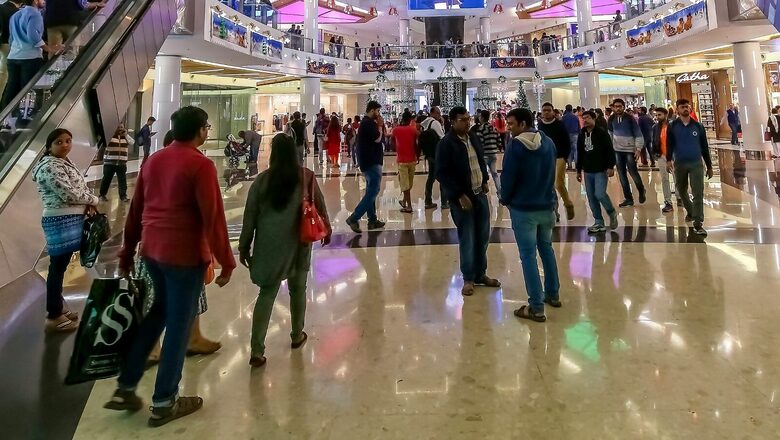
views
Tier-II cities will continue to play a vital role in India’s growth story and these cities are poised to be the new growth vectors in India in the coming years driven by their progress in the real estate landscape, work environment, quality of life, and sustainability, according to a report by realty consulting firm CBRE South Asia. It added that it is critical for these cities to sustain the current pace of infrastructure development and strengthen skill development.
It said, “These (Tier-II) cities are large talent bases, taking offices closer to talent holds the potential to be alternative centers of growth, fueling innovation and growth for office occupiers. Hence, it is increasingly critical for these cities to sustain the current pace of infrastructure development and strengthen skill development.”
The report, titled ‘Tier-II cities: Coming of Age’, is based on the analysis of 10 key cities — Chandigarh, Jaipur, Ahmedabad, Kochi, Thiruvananthapuram, Lucknow, Indore, Bhubaneshwar, Vishakhapatnam, and Coimbatore.
The widening economic base and access to a skilled talent pool are prime influencing factors for occupiers to consider expanding in tier-II cities. The various business clusters across tier-II cities offer a mix of non-SEZ and SEZ establishments with average quoted rentals ranging from as low as Rs 30-40 per sqft per month to about Rs 60-80 per sqft per month.
Most cities have also recorded a growing presence of flexible space operators, industrial hubs and malls. According to the report, the quality of life in these cities is well supported by the relatively affordable cost of living compared to tier-I cities, along with an increasing presence of healthcare facilities and educational institutions. There is also rising investor interest over recent years, with various plans announced by domestic and global firms to establish their footprint in these markets.
Anshuman Magazine, chairman and CEO (India, South-East Asia, Middle East and Africa) of CBRE, said, “The implementation of focused policy reforms and strategic infrastructure initiatives by the state/ central governments has resulted in consumer preference leaning towards suburbs and smaller cities. This is evidenced by the entry and expansion of flex operators and the increasing footprint of industrial establishments.”
The report said the growing urban sprawl is likely to spread beyond tier-I cities, so that tier-II cities take on the mantle of the future. Recognizing this need, the government started undertaking measures to plug in the prevailing infrastructure/business gaps that would boost the development of these cities.
Ram Chandnani, managing director (advisory & transactions services) of CBRE India, said, “Major tier-II cities are key to the imminent real estate boom, now boast of flourishing central and secondary business districts, with some even having established peripheral business clusters. Prominent developers are now making a beeline for these cities, propelled by demand from domestic and global corporates, flexible space providers, start-ups, ed technology firms, etc.”
Occupiers are encouraged by the quality infrastructure as well as affordable land cost and operations in these locations. While some are leasing space to set up their operations, others also opt for the flexible space route. Chandigarh, Jaipur, Kochi, Ahmedabad, Lucknow, and Indore have more than five flex operators as of H1 2022, while Bhubaneshwar, Visakhapatnam and Thiruvananthapuram and Coimbatore have 2-5 flex operators in the city.
Chandigarh, Kochi, Thiruvananthapuram, and Ahmedabad are cities with relatively higher stock as of H1 2022, while cities such as Jaipur, Coimbatore, and Indore have seen a relatively higher spurt in activity in the past six months, both in development completions as well as space take-up.
The report said Chandigarh has enabled growth in two adjacent satellite cities – Mohali and Panchkula, which are collectively known as ‘Tricity’. Jaipur is a gateway of tourism in Rajasthan, it is a part of the ‘Golden Triangle Tourist Circuit’, along with Delhi-NCR and Agra. Known as the ‘City of Nawabs’, Lucknow is an important center of governance, administration, education, commerce, culture, tourism, music and poetry in North India.
Coimbatore is well-known as the ‘Manchester of South India’ due to the significant presence of cotton and textile industries. It is also referred to as the ‘Pump City of India’ as it contributes to nearly half of India’s requirements of motors and pumps.
Kochi includes areas of Fort Kochi, Mattancherry, mainland Ernakulam, the suburbs in the north-east (Edapally, Kalamassery and Kakkanad) and Tripunithura in the south-east. It is the second-largest urban agglomeration in Kerala and a key commercial destination. Thiruvananthapuram, which is located at the southern end of the state’s coastal line, is popularly known as ‘The Evergreen City of India’. Key retail micro-markets in the city are MG Road, Pattom Kesavadasapuram and Trivandrum Bypass.
Visakhapatnam is a key administrative centre and a commercial hub, the city is well-known for heavy industries, shipbuilding and fishing. Key retail micro-markets in the city are Central, South and North Vizag.
Ahmedabad is known for its excellent infrastructure and favorable policy environment – the city has attracted investments across pharmaceuticals, textiles, automobile, and technology sectors.
Indore is one of the first 25 cities to be developed under the central government’s ‘Smart City Mission’.
Bhubaneswar is well-known as the ‘Temple City of India’, and the city is also emerging as an IT and education hub in eastern India over the past few years.
Read all the Latest Business News here


















Comments
0 comment